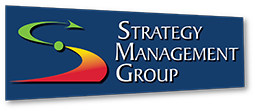I am an engineer by training and a math geek at heart.

So articles about girls and math catch my eye. Did you know that researchers agree that one’s ability to excel at math and science is as much about
attitude as it is about “natural gifts” or gender? This affirms my own less-than-scientific research findings. I have a daughter and from her earliest years, I showed her how to apply math to everyday activities (baking was our favorite hands-on lesson, of course). And anytime friends of hers would complain about how hard math was, I’d make them all stand up and shout, “Girls ROCK at math!!!” It’s all about the attitude. Of course, I had a good role model for this. My father showed me how fun math was when I was a child as we built motors together and played around with electronics…scribbling equations and schematics as we went. I never feared math and science…they were FUN!
In my work life, I’ve discovered that dread of math, especially statistics, is widespread in the business community. So let’s tackle something fun:
the concept of correlation.
When developing performance measures in business, we sometimes face a stumbling block in that the thing we desire most to measure is, unfortunately, impossible to measure
directly. So, we have to look for a “proxy” measure that is
correlated.
Let me illustrate with an example from daily life. Let’s say I want to know if I am maintaining my ideal weight versus gaining weight. It’s easy to measure that
directly – hop on the bathroom scale. But, unfortunately, I can’t. I travel constantly so I do not have a bathroom scale with me most days.
So I have a
correlate that I measure. I always carry the same pair of skinny jeans with me. As long as the jeans will button, I am fairly certain of what the bathroom scale might say, if I had one. The fit of my jeans is
correlated to my weight. Now, a statistician will remind us that “correlation does not equal causation.” This simply means is that I need to consider that other things may be causing my jeans not to fit – for example, maybe they shrunk in the wash. But understanding this, I am reasonably certain that they are a good proxy measure while on the road.
See how easy it was to master two important concepts for measuring performance in business –
Direct Measure and Correlated Measure? It’s all about the attitude!!
To learn much, much more about how to develop meaningful performance measures, we invite you to explore
The Institute Way or join us at an
upcoming training course.

 I was recently on yet another military base and had the opportunity to visit with a former Institute student – a U.S. Army Colonel. He had deployed to Kuwait just days after attending our Balanced Scorecard Boot Camp course in 2011. Upon arrival he found that the Army Contracting Command for which he was to be responsible was faced with tremendous challenges – from dealing with perceptions of corruption in the local supply chain to managing the extreme complexities of contracting for all of the products and services needed by the Army in such a challenging location.
This particular command needed a rapid transformation in order to achieve his vision of “being recognized by our customers as the best contracting office in the U.S. Army.” – a bold vision considering the challenges that he and his team were facing.
But before his tour of duty had ended, his contracting command had, indeed, received accolades and acknowledgement as being one of the best Army Contracting Commands anywhere in the world.
How did he lead his Command to achieve this vision in such a short time period? He applied his new knowledge and developed a strategic balanced scorecard.
A few “secrets” to the success of his scorecard implementation should sound familiar to students of The Institute Way:
I was recently on yet another military base and had the opportunity to visit with a former Institute student – a U.S. Army Colonel. He had deployed to Kuwait just days after attending our Balanced Scorecard Boot Camp course in 2011. Upon arrival he found that the Army Contracting Command for which he was to be responsible was faced with tremendous challenges – from dealing with perceptions of corruption in the local supply chain to managing the extreme complexities of contracting for all of the products and services needed by the Army in such a challenging location.
This particular command needed a rapid transformation in order to achieve his vision of “being recognized by our customers as the best contracting office in the U.S. Army.” – a bold vision considering the challenges that he and his team were facing.
But before his tour of duty had ended, his contracting command had, indeed, received accolades and acknowledgement as being one of the best Army Contracting Commands anywhere in the world.
How did he lead his Command to achieve this vision in such a short time period? He applied his new knowledge and developed a strategic balanced scorecard.
A few “secrets” to the success of his scorecard implementation should sound familiar to students of The Institute Way:





 So articles about girls and math catch my eye. Did you know that researchers agree that one’s ability to excel at math and science is as much about
So articles about girls and math catch my eye. Did you know that researchers agree that one’s ability to excel at math and science is as much about 
